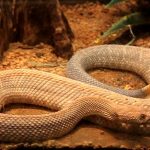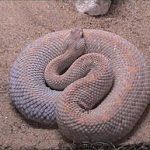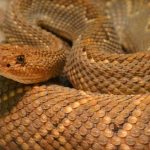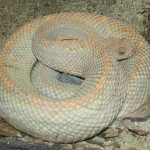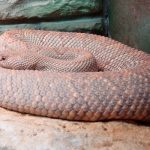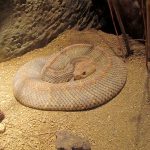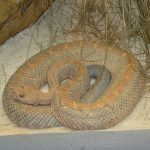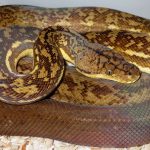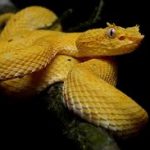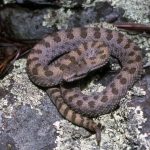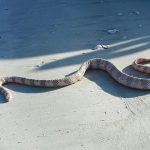Aruba Rattlesnake
Aruba rattlesnake is a poisonous subspecies of snake endemic to the Caribbean island of Aruba off Venezuelan coast. It belongs to the viper family and one of the rarest kinds of rattlesnakes in the world. At present, there are only a few surviving members in the wild.
| Kingdom | Animalia |
| Phylum | Chordata |
| Subphylum | Vertebrata |
| Class | Reptilia |
| Order | Squamata |
| Suborder | Serpentes |
| Family | Viperidae |
| Subfamily | Crotalinae |
| Genus | Crotalus |
| Species | Crotalus durissus |
| Scientific Name | Crotalus durissus unicolor |
| Other Names | Aruba Island Rattlesnake, Cascabel |
| Length | Around 90 cm |
| Weight | Around 1 kg |
| Color | Light brown to tan to pink in color with dark brown or white to apricot or brown to slate diamond-shaped markings, the markings are only noticeable along the middle of the back |
| Distribution | Island of Aruba |
| Habitat | Thornscrub and desert habitats |
| Diet | Rodents, birds, lizards |
| Hibernation Fact | Undergoes hibernation |
| Venom Fact | Venomous |
| Breeding Season | September – January |
| Mode of Reproduction | Viviparous (giving birth to live young) |
| Litter Size | 5 to 15 |
| Gestation Period | 4 months |
| Reproductive Age | Males: 4 years of age Females: 5 years of age |
| Average Lifespan | 15 to 20 years |
| IUCN Conservation Status | Critically Endangered |
Aruba Rattlesnake Pictures Gallery
- Aruba Island Rattlesnake
- Aruba Rattlesnake Images
- Aruba Rattlesnake Photos
- Aruba Rattlesnake
- Crotalus Durissus Unicolor
- Images of Aruba Rattlesnake
- Aruba Rattlesnakes
- Aruba Rattlesnake Pictures


